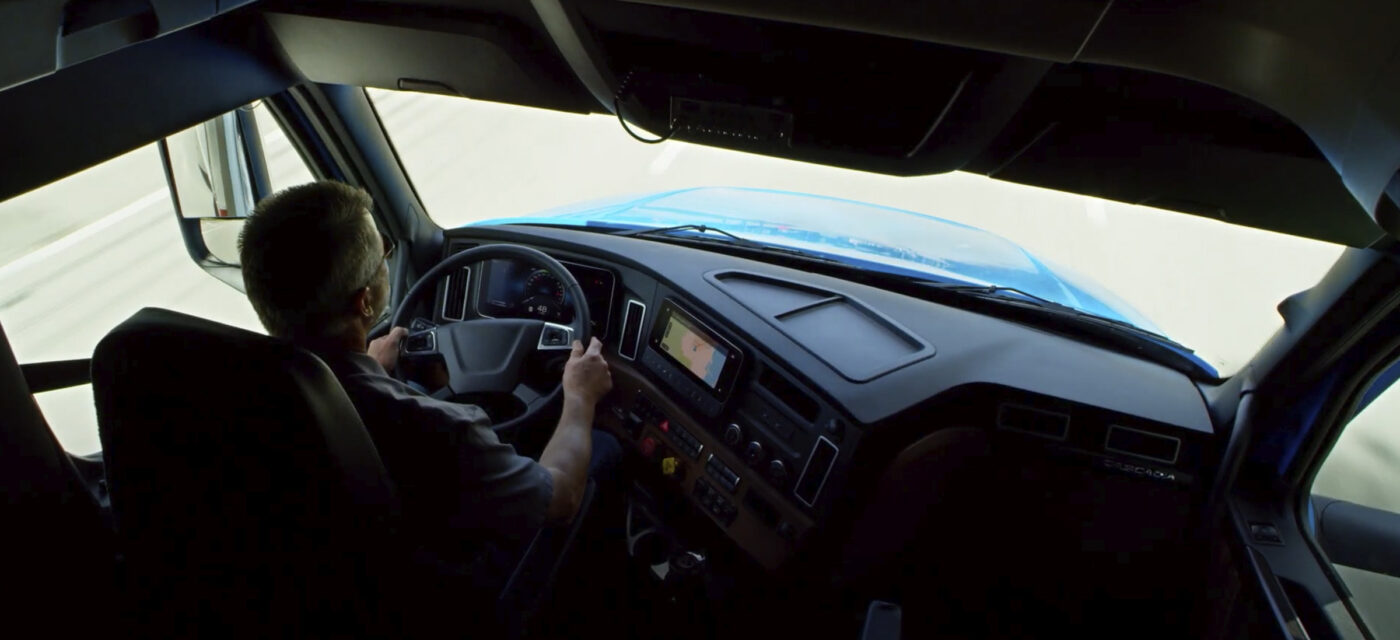
Whole Body Vibration - The Impacts and Solutions
Anyone who has driven for any length of time knows the sensation of vibration from the road and vehicle. When it’s severe enough, it resonates through the vehicle. It can be felt through the floor, the seat and the steering wheel. However, the average vibration goes unnoticed. The fact that it goes unnoticed doesn’t mean the impact is any less severe. This particularly applies to drivers who spend long hours in the driver’s seat. Some effects of whole body vibration (WBV) are noticeable within a day of driving, while other take months, or even years, to develop and can go unnoticed for a long time until the effects catch up. There are some preventative measures that drivers and fleet managers can put in place to help reduce the impact of WBV on their bodies and vehicles.
Short Term Effects of WBV
Drivers are exposed to WBV every time they drive. Whether it’s low levels of exposure, or high levels, drivers will begin to feel the effects in as little as half an hour. The first thing most drivers notice is discomfort. They’ll start feeling sore and achy. With longer periods of exposure, fatigue sets in.
Fatigue over time results in driver distractibility, as well as reduced coordination. Drivers will begin to have issues with focusing on the road and their surroundings. Impaired coordination makes responding to sudden traffic changes much more difficult, potentially endangering them and others on the road. (Du et al., 2018) Inattentiveness and impaired coordination while behind the wheel contribute to no small number of accidents. The US National Highway Traffic Safety Administration announced that in 2023, fatigue accounted for roughly 20% of all motor vehicle crashes, 21% of all crashes resulting in death, and 13% of crashes that result in hospitalizations. All in all, that’s over 300,000 crashes, 100,000 injuries, and 6,400 deaths per year. (National, 2023)
Not only does fatigue increase the risk of vehicle accidents, but it also increases the risk of individual accidents. Fatigue is known to impair balance, which is a large contributor to fatigue related accidents. Drivers have an increased risk of falling when exiting the cab due to decreased coordination, leading to a risk of severe injury resulting from the fall. (Ahuja et al., 2005; Park et al., 2021). Of all nonfatal injuries and illnesses not related to transportation incidents, 30% were attributed to falls, slips and trips. In the tractor-truck industry, 62% of non-fatal injuries require days away from work (Smith, 2015).

Long Term Effects of WBV
As drivers are exposed to WBV over time, their bodies begin to slowly show the effects. The typical pedestrian driver may never notice the direct long-term effects of WBV. Truck drivers, however, who work upwards of 60 hours per week and have 3,000 hours of exposure per year, are particularly susceptible to the detrimental effects of WBV. As exposure to WBV increases, so does the severity of the conditions. Many of the long-term conditions resulting from WBV can take months, or even years, to develop.
WBV is known to contribute to occupational chronic neck and back pain (Pope et al., 1990, 1998; Bernard, 1997; NRC/IOM, 2001). Workers exposed to higher levels of WBV have a 1.5 times greater risk for developing lower back pain compared with workers exposed to low levels of vibration (Burström et al., 2014). The exposure to near constant vibration elevates spinal load, thins intervertebral discs, and subsequently leads to disc herniations (Fritz, 1997, 2000; Griffin, 1990; Thalheimer, 1996). The probability of increased bone damage occurs as exposure increases. Fatigue-induced micro fractures in the in vitro lumbar vertebral endplates are one such result. Over time, these micro fractures may lead to overall disc degeneration (Brinckmann et al., 1998; Waters et al., 2007; Ayari et al., 2009).
Drivers with extreme exposure may find themselves experiencing other health conditions on top of back and neck pain. WBV is also known to contribute to respiratory disorders, reproductive issues, muscle fatigue and increased muscle forces (Hansson et al., 1991; Wilder et al., 1996).
With all the health repercussions from WBV, many drivers find their quality of life impacted through their retirement years. After retirement, neck and back disorders continue to plague individuals despite their reduced exposure to WBV. While these health conditions statistically do not cause drivers to retire early, they will impact individuals for the rest of their lives with residual pain and permanent disorders.

How to Reduce WBV
Now that we have covered the risks of WBV, both short and long term, you may be wondering just how fleets and drivers can reduce driver exposure and the harmful effects of WBV. While there is no perfect answer to completely eliminate WBV, there are several ways to minimize exposure and prolong driver health.
1. ROI Cabmate®
Link developed ROI Cabmate as a responsive air ride cab suspension. The smart system uses sensors to react in real time to road conditions, dampening impacts to the whole cab from severe road deformities while also reducing vibration felt not only by the driver, but also by the whole cab.
According to the study published in the Journal of Safety Research, vibrations of 4-10 Hz were found to be most effective at inducing drowsiness. This frequency range can induce significant drowsiness within 30 minutes, necessitating research to identify ways to minimize whole-body vibration components that contribute to drowsiness. (Bhuiyan et al., 2022)
The ROI Cabmate system has been demonstrated to reduce in the 4-10 Hz range by 18.2% vertically and 30.2% longitudinally compared to a tractor with a traditional cab suspension. Because this range is also where the head, chest and abdomen vibrate easily, reducing the specific vibration range, the ROI Cabmate can lesson associated symptoms like drowsiness, lower back pain, spinal injury, sciatic nerve pain, general discomfort, and fatigue.
Air ride seats reduce WBV where the driver sits, but they do not affect the WBV received through the floor of the vehicle where drivers rest their feet, through the pedals, or through the steering wheel. A study found that brand new air suspension seats only reduced around 10% of floor vibration (Johnson 2016). The off driver in driver teams will also receive the whole effects of WBV in the bunk while trying to rest.
ROI Cabmate reduces the WBV throughout the entire cab, not just the seat. This creates a safer environment for drivers, reducing fatigue and fatigue-related conditions. It also allows off-drivers to rest easier in the bunk, preparing them for a safer drive.
2. Vehicle Maintenance
It is important to keep up with vehicle maintenance to lessen the impacts of WBV. Before drivers depart, they should ensure that their tires are properly inflated and inspected for signs of misalignment. Underinflation in tires can cause uneven wear and unbalance, which can contribute to vibration felt by the driver. Misalignment can also contribute to harsh WBV exposure.
Preventative maintenance steps as simple as a routine oil change can also help reduce WBV exposure. Keeping oil fresh will lower friction within the engine components, reducing engine vibration during operation.
3. Routine Breaks
Federal law requires drivers to take a 30-minute break after driving for 8 hours. By the 8 hour mark, drivers have already been exposed to significant levels of WBV, meaning that they are likely feeling the effects of fatigue and reduced coordination. Therefore, fleets should encourage their drivers to take shorter rests within the 8 hour timeframe to prevent the worst effects of WBV. This can increase awareness and reduce the risk of accidents caused by fatigue related to WBV.

The Importance of Combating WBV
Learning about the risks of WBV is the first step to preventing the effects. Only when a risk is known can it be combated. Fleets who take the effects of WBV into mind uphold a safer environment for their drivers, both in the short and long term. With technology specifically designed to reduce WBV exposure, routine maintenance and frequent breaks, fleets can take WBV risks into their own hands to create a safer workplace, reducing short-term safety problems and lowering the risk for long-term health problems. When fleets take WBV risks into account, they help keep their drivers behind the wheel, not only for the day, but for years to come.
References
(2023). National Sleep Foundation’s 2023 Drowsy Driving Survey [Review of National Sleep Foundation’s 2023 Drowsy Driving Survey]. In www.theSF.org. National Sleep Foundation. https://www.thensf.org/wp-cont...
Ahuja S, Davis J, Wade L. (2005) Postural stability of commercial truck drivers: impact of extended durations of whole-body vibration. In Proceedings of the Human Factors and Ergonomics Society (HFES), 49th Annual Meeting, September 2005, Orlando, FL. pp. 1810–4. doi:10.1177/154193120504901912
Ayari H, Thomas L, Dor S et al. (2009) Evaluation of lumbar vertebra injury risk to the seated human body when exposed to vertical vibration. J Sound Vib; 321: 454–70.
Bernard T. (1997) Musculoskeletal disorders and workplace factors. Washington, DC: DHHS Publication (NIOSH). pp. 97–141.
Bhuiyan, M. H. U., Fard, M., & Robinson, S. R. (2022). Effects of whole-body vibration on driver drowsiness: A review. Journal of Safety Research, 81, 175–189. https://doi.org/10.1016/j.jsr....
Brinckmann P, Frobin W, Biggemann M et al. (1998) Quantification of overload injuries to thoracolumbar vertebrae and discs in persons exposed to heavy physical exertions or vibration at the workplace. Part II: occurrence and magnitude of overload injury in exposed cohorts. Clin Biomech; 13: S1–36.
Burström L, Nilsson T, Wahlström J. (2014) Whole-body vibration and the risk of low back pain and sciatica: a systematic review and meta-analysis. Int Arch Occup Environ Health; 88: 403–18.
Du BB, Bigelow PL, Wells RP et al. (2018) The impact of different seats and whole-body vibration exposures on truck driver vigilance and discomfort. Ergonomics; 61: 528–37.
Fritz M. (1997) Estimation of spine forces under whole-body vibration by means of a biomechanical model and transfer functions. Aviat Space Environ Med; 68: 512–9.
Fritz M. (2000) Description of the relation between the forces acting in the lumbar spine and whole-body vibrations by means of transfer functions. Clin Biomech; 15: 234–40.
Griffin MJ. (1990) Handbook of human vibration. London, UK: Academic Press Ltd.
Hansson T, Magnusson M, Broman H. (1991) Back muscle fatigue and seated whole body vibrations: an experimental study in man. Clin Biomech; 6: 173–8.
Johnson, P. W., Hudock, S. D., McDowell, T., & Dalsey, E. (2016, October 12). Reducing Whole Body Vibration to Improve the Safety and Health of Bus Drivers. Centers for Disease Control and Prevention.
Kim JH, Zigman M, Dennerlein JT et al. (2018) A randomized controlled trial of a truck seat intervention: part 2—associations between whole-body vibration exposures and health outcomes. Ann Work Expo Health; 62: 1000–11.
NRC/IOM NRCCaloM. (2001) Musculoskeletal disorders and the workplaces: low back and upper extremities. Washington, DC: National Academy Press.
Park JH, Kia K, Srinivasan D et al. (2021) Postural balance effects from exposure to multi-axial whole-body vibration in mining vehicle operation. Appl Ergon; 91: 103307.
Pope MH, Andersson G, Frymoyer J et al. (1990) Occupational low back pain: assessment, treatment and prevention. St. Louis, MO: Mosby.
Pope MH, Magnusson M, Wilder DG. (1998) Low back pain and whole body vibration. Clin Orthop Relat Res; 354: 241–8.
Schwarze S, Notbohm G, Duuis H et al. (1998) Dose-response relationships between whole-body vibration and lumbar disk disease—a field study on 388 drivers of different vehicles. J Sound Vib; 215: 613–28.
Smith S (2015) Workplace hazards of truck drivers. U.S. Bureau of Labor Statistics; 5.
Teschke K, Nicol A, Davies H et al. (1999) Whole body vibrations and back disorders among motor vehicle drivers and heavy equipment operators. Report to WCB Appeals Commission. Richmond, BC: Workers’ Compensation Board of British Columbia.
Thalheimer E. (1996) Practical approach to measurement and evaluation of exposure to whole-body vibration in the workplace. Semin Perinatol; 20: 77–89.
Waters T, Rauche C, Genaidy A et al. (2007) A new framework for evaluating potential risk of back disorders due to whole body vibration and repeated mechanical shock. Ergonomics; 50: 379–95.
Wilder DG, Aleksiev AR, Magnusson ML et al. (1996) Muscular response to sudden load. A tool to evaluate fatigue and rehabilitation. Spine; 21: 2628–39.
Blog Author
Kody Taylor
Senior Account Manager


